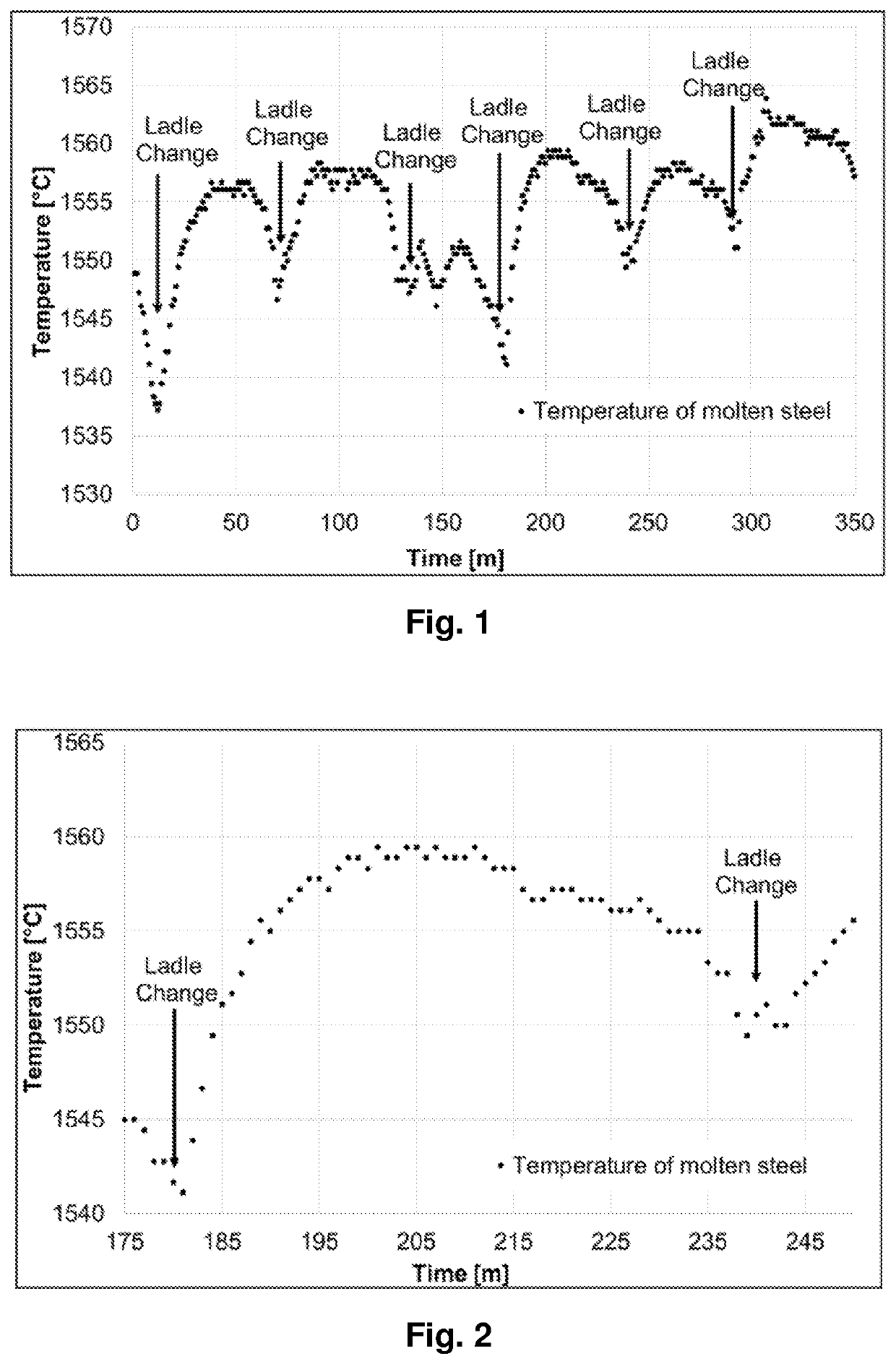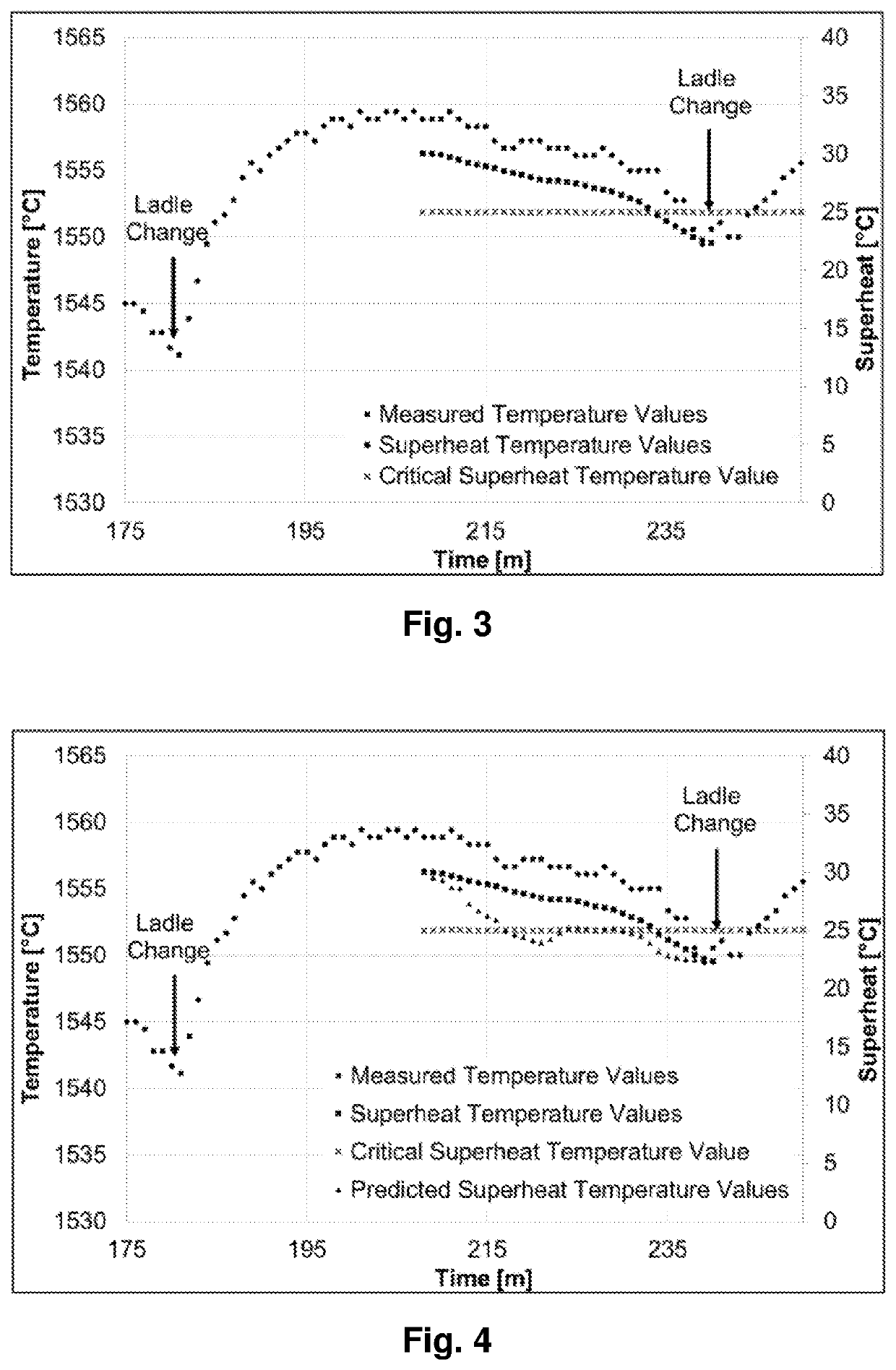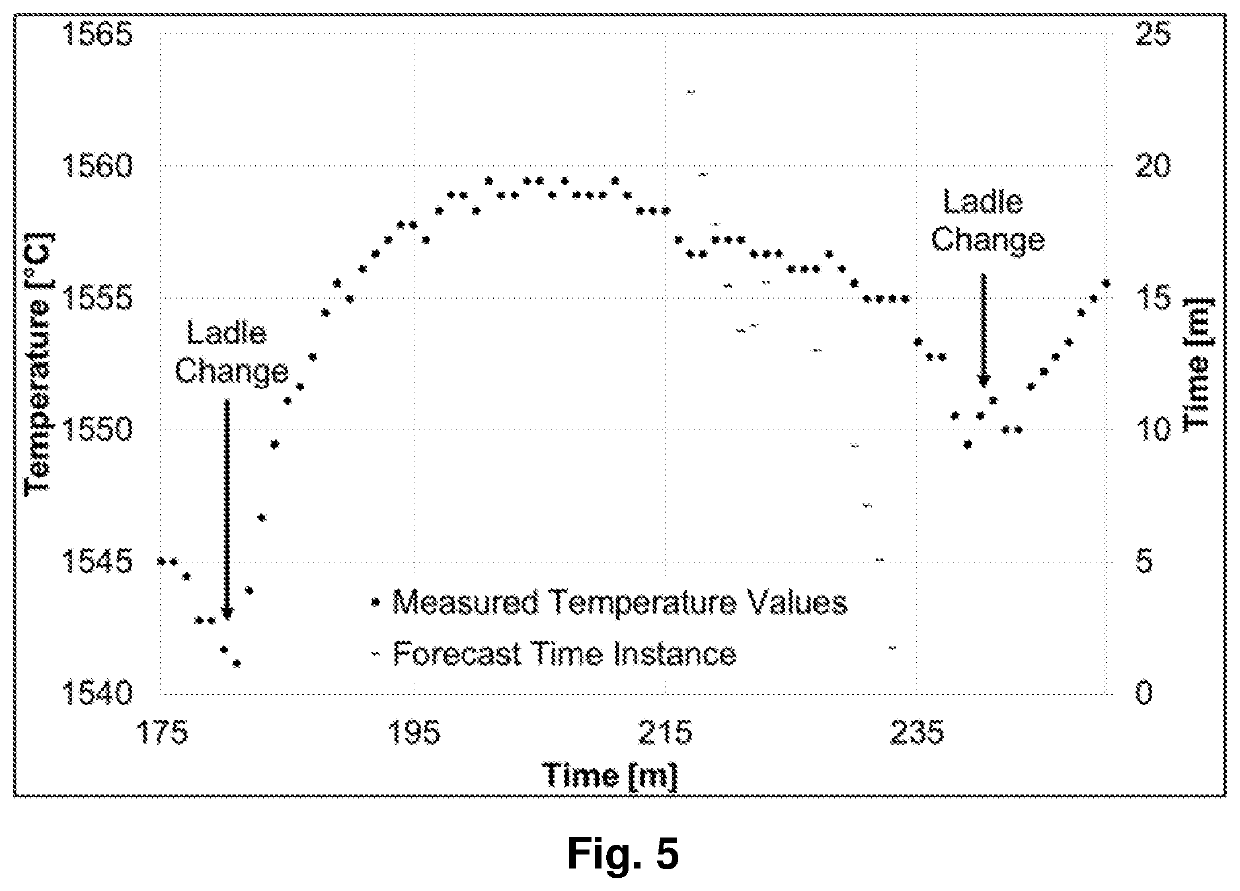Method and apparatus for monitoring a continuous steel casting process
a continuous steel and process monitoring technology, applied in the field of continuous steel casting process monitoring, can solve the problems of difficult adjustment to the right casting speed, inability to monitor the temperature and composition of steel in the ladle, and inability to meet the needs of continuous steel casting, so as to improve the safety of the operator and fast response time
- Summary
- Abstract
- Description
- Claims
- Application Information
AI Technical Summary
Benefits of technology
Problems solved by technology
Method used
Image
Examples
Embodiment Construction
[0075]FIG. 1 shows an evolution of a tundish temperature over a casting process where several ladles of molten steel are subsequently poured into the tundish. In total, six ladle changes are exemplarily shown in FIG. 1. It can be seen that the evolution of the temperature and the time to cast can vary from ladle to ladle. In addition, it can be seen that towards the end of the ladle, a steep drop in temperature takes place. In the shown example, a liquidus temperature of 1529° C. was calculated. As it can be seen from FIG. 1, the measured temperature of the molten steel almost dropped to the level of the liquidus temperature during the first and fourth ladle change. Therefore, determining superheat values and predicting based on the determined temperature values a forecast time instance when the critical superheat temperature is reached can be very beneficial for monitoring a continuous steel casting process.
[0076]FIG. 2 shows a detailed view of the tundish temperature where a singl...
PUM
| Property | Measurement | Unit |
|---|---|---|
| Fraction | aaaaa | aaaaa |
| Fraction | aaaaa | aaaaa |
| Temperature | aaaaa | aaaaa |
Abstract
Description
Claims
Application Information
 Login to View More
Login to View More - R&D
- Intellectual Property
- Life Sciences
- Materials
- Tech Scout
- Unparalleled Data Quality
- Higher Quality Content
- 60% Fewer Hallucinations
Browse by: Latest US Patents, China's latest patents, Technical Efficacy Thesaurus, Application Domain, Technology Topic, Popular Technical Reports.
© 2025 PatSnap. All rights reserved.Legal|Privacy policy|Modern Slavery Act Transparency Statement|Sitemap|About US| Contact US: help@patsnap.com



